Think push-ups are tough? Meet their stronger, sculpted cousin, the dips. Often overlooked, dips are a powerhouse move that utilises only your own body weight to build significant upper-body strength. This exercise helps carve strength, size, and control like few others can. Learn how to do dips exercise correctly in this guide and unlock your body’s true strength potential.
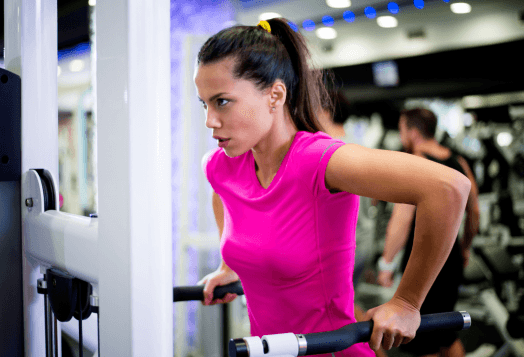
What Are Dips?
Dips are a classic upper-body strength movement where you lower and raise your body using parallel bars, rings, or even a chair. As a bodyweight exercise within callisthenics, dips engage the triceps, chest, shoulders, rhomboid muscles and core muscles while building muscle and enhancing push form. Whether you’re performing bench dips at home or full dips in a gym, this compound movement is a cornerstone of muscle building.
Benefits of the Dips Exercise
Upper body strength: Targets triceps, chest-focused dips and deltoids for explosive power.
Arm development: Boosts muscle and tone in the triceps and biceps secondary muscles.
Muscle building and hypertrophy: Ideal for chest dips and promoting muscle growth.
Functional strength: Improves pushing up power and full extension movement.
Chest gains: Chest dips help build pectoral muscles more than many pushups.
Core engagement: Maintains stability and posture, aiding exercises to straighten the back.
How to do Dips: A Step-By-Step Guide
Wondering how to do the dips exercise? Here’s a step-by-step guide to help you perfect your form:
Step 1: The Setup
Grip the bars (or rings) firmly, keeping hands shoulder-width apart. Keep shoulders down and back, core tight, feet crossed. This sets up upper body strength and a strong grip.
Step 2: The Liftoff
Gently lift into a full arm extension. Lean slightly forward to emphasise chest dips or stay vertical for the tricep dips exercise. This ensures full extension and balanced activation of the triceps and pectorals.
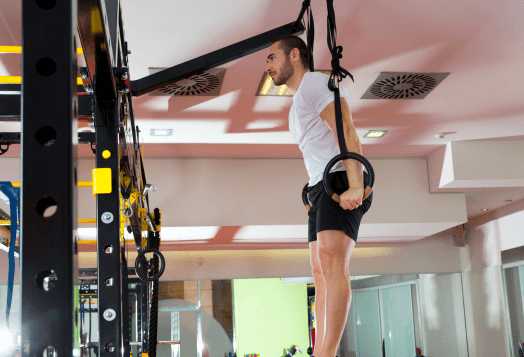
Step 3: The Descent
Slowly bend elbows until upper arms are parallel (90°). Keep your torso stable, no swinging. This targets your muscle building and arm development, with tension across the chest and rhomboids.
Step 4: The Power Press
Push up to full extension, exhaling at the top. Alternate emphasis by shifting torso angle: lean forward for chest‑focused dips, remain upright for triceps.
Repeat reps with a controlled tempo (2–3 seconds down).
How to do a dip for beginners?
Here’s how to do dips exercise as a beginner with easier variations.
Step 1
Start with a chair or bench dip exercise. Sit on a stable surface, place hands beside hips, feet on the floor with knees bent. That’s your starting position.
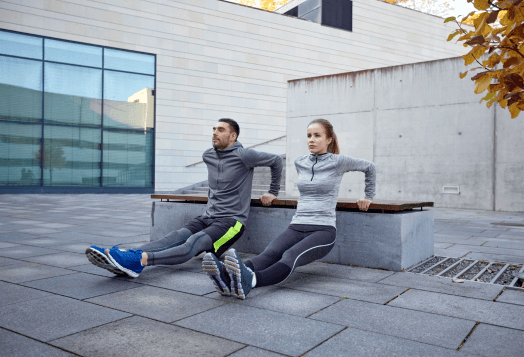
Step 2
Lower your body until your elbows reach 90 degrees. Keep your shoulders away from your ears, with your core braced.
Step 3
Press back up until arms are fully extended, squeezing triceps.
Once comfortable, switch to assisted dips (using a resistance band or assisted dip machine) before progressing to parallel bar or ring dips.
How are Dips Exercises helpful for Building Upper Body Strength?
Dips, alongside exercises like the bench press, are a gold standard for upper body strength. They’re a compound exercise that recruits multiple muscle groups like the chest, triceps, shoulders, rhomboid muscles, and core for full-body engagement. Their functional strength training aspect translates to real-world pushing tasks, improves arm development, and sculpts a well-rounded upper body, all within a single movement. Regular progression, from chair dips to gymnastic ring dips, leads to steady muscle building and improved arm and chest strength.
What equipment is needed to do dips?
Below are the key tools you need for your dips journey:
1. Parallel bars (common in parks/gyms) for gym‑style dips.
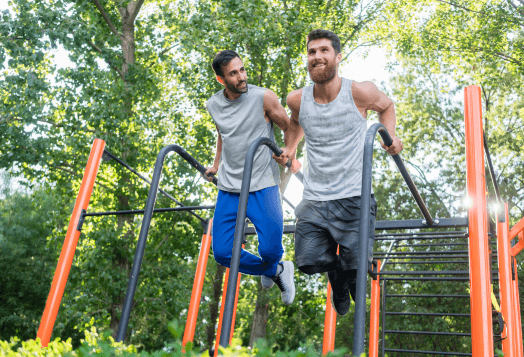
2. Resistance bands for assisted dips are ideal for beginners.
3. Bench or sturdy chair, perfect for at‑home bench dips exercise.
4. Gymnastic rings for stability and advanced ring dips.
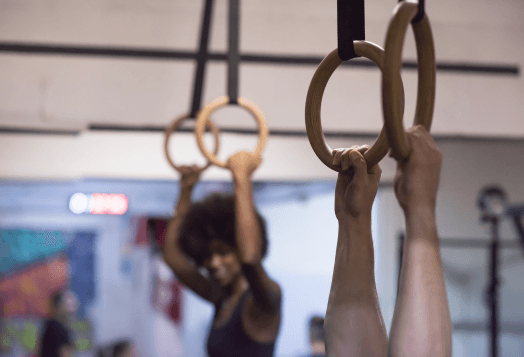
5. Assisted dip machine for controlled progression.
Tips for Correct Dips Exercises to Maximise Results
Maintain proper form: shoulders down, elbows close to the body, chest open.
Full extension: go all the way up; that’s crucial for muscle building.
Controlled tempo: 2–3 secs lowering, slight pause, explosive up, boosts time under tension.
Recommended Sets and Reps: Start with 3 x 8 with 12 reps of dips exercise. Advanced lifters can do 4-5 sets of 6-10 weighted or harder dips.
Shoulder safe: Warm up the rotator cuff, avoid lowering too deeply.
Progress wisely: Start with chair dips, then progress to band-assisted parallel bar dips, followed by ring dips, and finally, weighted dips.
Grip matters: Use a neutral grip to engage muscles and forearms.
Common Mistakes to Avoid
While this exercise may seem easy, incorrect form can cause more harm than good. Here are some common mistakes to avoid for proper gains
Poor Form: Avoid flopping your chest forward or flaring your elbows, as this can strain your shoulders.
Range of Motion Issues: Only partial dips limit muscle activation; remember full extension and at least 90-degree depth.
Shoulder and Wrist Strain: Don’t drop too low. Maintain a neutral wrist position and warm up the shoulder.
Lack of core engagement: This leads to swinging. Brace your abs to stabilise.
Variations & Progressions in Dips Exercises
These exercises have a full range of beginner to advanced motions.
Easier:
Chair dip exercise
Bench dips
Assisted dips with resistance bands or a machine
Moderate:
Standard parallel bar dips
Straight bar dips
Advanced:
Ring dips (stability challenge)
Korean dips (lean back over bar)
Weighted dips (belt with plates or dumbbell between feet)
Chest dips exercise (forward lean on parallel bars)
How to add dips to your routine?
Integrate dips exercise into your workouts twice weekly. On “push” days, start with dips to pre‑exhaust chest and triceps before pressing movements. For full-body days, pair dips with pulling exercises like rows or pull‑ups to balance push-pull strength. For each session, do 3-5 sets of 6-12 reps, depending on your level.
Progress by adding weight, reps, or more challenging variations, such as moving from bench dips to Korean dips. Because dips engage core muscles and stabilise the whole body during full extension, they double as functional strength training and a posture enhancer.
Building Upper Body Strength
Dips exercise is a gateway to powerful upper body development, improved core strength, and serious muscle definition. With variations ranging from chair dip exercises for beginners to advanced ring dips and chest dips, there's a version for every fitness level. By learning how to do dips exercise with proper form and following a consistent routine guided by fitness trainers, you can build strength, stability, and confidence, rep by rep.
Disclaimer: The information provided is intended for general informational purposes only. It is not a substitute for professional advice or guidance. For personalised recommendations or specific concerns, please consult a certified professional.




